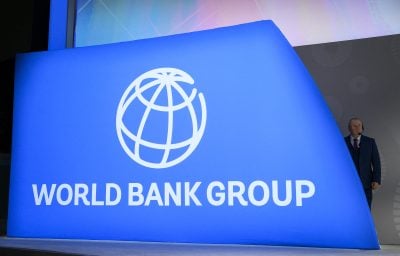KCB is East Africa’s largest and oldest bank, and as such, any changes within this financial giant, whose asset value is estimated to be more than $2.6bn, are bound to raise eyebrows in the region. The bank is currently undertaking the biggest re-engineering process in its recent history. Wanjohi Kabukuru talked to KCB CEO Dr Martin Oduor-Otieno to find out more.
Under the slogan that the KCB board of directors has dubbed ‘transformation programme’, KCB is currently pursuing a strategy to reposition itself from a “good to a great bank”.
This is the second time the bank has transformed itself since the rebranding exercise in 2003.
KCB’s reengineering process began early in January 2011 when they hired the services of global consultants McKinsey & Company to set up a road map for the bank’s transformation by carrying out a four-month diagnostics of the bank.
“Today is the beginning of another phase of our journey to reposition KCB for the future,” CEO Dr Martin Oduor-Otieno said, while welcoming McKinsey & Company to redesign the bank’s makeover plans.
“The key agenda will be to review our business model as well as operating structures and processes with a view of recommending solutions that will make KCB more efficient and productive, while also setting the stage for our leap to the next level.”
KCB has had a tumultuous history littered with political brinkmanship thanks to the majority shareholding leverage held by government in the past. This dalliance with an overbearing political system during the notorious Kenya African National Union (KANU) party heydays saw the bank making heavy losses amounting to over $48m in 2002.
Following the national elections of 2002 and the entry of a new business-friendly attitude, KCB took a turn for the better and started posting impressive results. In 2010, KCB registered a profit after tax of $104m. As of August 2010, the Kenyan government’s shareholding at KCB had shrunk to 17%.
As the McKinsey team got to work, Oduor-Otieno was optimistic: “We expect this exercise to result in operational changes that will lead to efficiency and cost reduction, while also enabling us to increase our market share and employee productivity.”
Boasting some 215 branches spread all across Kenya, Uganda, Tanzania, Rwanda and South Sudan, and shares cross-listed at the Nairobi Stock Exchange, Dar es Salaam Stock Exchange, Uganda’s Securities Exchange and over the counter in Rwanda, KCB straddles East African banking terrain like a colossus, with a staff of some 5,639.
According to Oduor-Otieno, the McKinsey recommendations are helping to steer KCB’s corporate and governance structures, job roles, human resource placement, risk management and mitigation mechanisms, employee performance management and reward frameworks as well as IT infrastructure and other subsidiary businesses.
“Indeed, it is expected that the transformation project will open up opportunities for the bank to grow shareholder value, deliver world-class customer service and create exciting career opportunities for staff,” Oduor-Otieno says.
Radical change of posts
McKinsey & Company, who are not new to the Kenyan corporate scene, prescribed almost the same measures they had suggested for KenGen and Kenya Airways to KCB.
Following the consultant’s recommendations and with full approval granted by the board, Oduor-Otieno has moved faster and made radical changes in KCB’s corporate governance structure in what he termed as “first phase changes”.
That the changes are far-reaching is clear. The current restructuring is expected to trim the bank’s executive team down to seven from 22, in a move that is expected to check staff costs that rose from $44m in 2006 to $103m last year, stifling profit growth.
As far as operational changes are concerned, KCB has made key radical changes in its management structure.
“Our new organisational structure will help achieve many milestones which will include an efficient, lean organisation that will allow for faster decision making for the benefit of the bank’s customers and other stakeholders. It will also enable the bank to pay focused attention to its business in Kenya as well as the international business in line with its vision of becoming a pan-African bank,” Oduor-Otieno says.
The posts of two deputy CEOs, director of public affairs and communication and the divisional director in charge of special projects were all scrapped.
Two new posts – chief business officer (International), who will cater for international businesses outside Kenya, and chief business officer (Kenya) have been created.
James Agin, who was formerly a regional director, is the new CBO (International). The CBO (Kenya) post was still vacant at the time of going to press.
Another post to look after IT operations and customer service, credit plus logistics and overseeing procurement, facilities and security under the title chief operating officer (COO) has also been created.
The new COO post has been filled by Paul Tikani, who was director of operations. A similar position with the title chief financial officer, to supervise financial planning and control, treasury, strategy, innovations and new business opportunities, has also been fashioned but it is yet to be filled.
The four appointees will combine the duties that were initially handled by 21 directors and mark the first line of senior management appointments.
David Malakwen and Rose Kinuthia retain their positions as company secretary and chief risk officer respectively. Paul Mutiso and Charles Maranga fill up the executive committee as respective directors for audit and human resources. Audit, risk, human resources and the company secretary will continue to report to the CEO.
“These appointments are part of the reorganisation of the KCB group to align the functions in a move aimed at driving our strategy to grow our business, enhance customer service, create efficiencies in the business and manage our cost-income ratio, better to increase shareholder value and make KCB an employer of choice,” Oduor-Otieno says.
In its endeavour to facilitate a new direction, the changes effected have had wide-reaching ramifications, with eight senior executives leaving the bank to pave the way for fresh blood.
They include Sam Kimani (deputy CEO, group controls), Catherine Njoroge (special projects), Kepha Bosire (corporate communications). Five – Mary-Ann Musangi (marketing), Tony Githuku (IT), Caroline Kariuki (mortgages), Tim Kabiru (retail) and Stanley Towett (finance) – opted to leave on voluntary retirement. The directors who are leaving will get a send-off package of one and a half months’ salary for every year worked.
“The KCB board has agreed to release them. The bank will over the next couple of weeks make further announcements on the second level senior management roles in line with the new structure,” Oduor-Otieno says.
Rebranding exercise
The ongoing reorganisation process signals the first step towards reducing the bank’s operational expenses. Departmental mergers and voluntary retirement are the vogue at KCB during this momentous transition, with market watchers expecting a rebranding campaign in the near future.
Though not confirmed by the management, industry watchers expect the staff numbers, currently standing at 5,639, to reduce significantly, with heavy investment being pegged on ICT and the now successful banking outsourcing buzzword: ‘agency banking’.
In 2009, the bank’s wage bill stood at $91m. The heavy operational costs incurred by the bank over the years are what forced it to seek a turnaround that will steer its profits upwards, increase market leadership presence and at the same time reduce its wage bill.
“The transformation project continues and the second phase will see alignment of functions across the rest of the business to support the new structure. In the meantime, implementation on a pilot basis of a number of initiatives is already returning positive and exciting results focusing on improved efficiency, cost management and customer service,” Oduor-Otieno explains.
In the next 24 months, KCB expects to slash its middle level management staff all the way down to auxiliary staff. This seems to be the fad in most of the financial institutions in the East African business hub of Nairobi. Barclays Bank of Kenya (BBK) has undertaken a similar move after noticing its fortunes had dwindled following a busy hiring period in 2007 that was aimed at enhancing and increasing market share. By December 2010, BBK had relieved some 200 managers off their plum posts.
“We intend to reduce our cost-to-income ratio to about 50% in the next two years and this will be achieved by growth in income and reduction of costs,” Oduor-Otieno reveals.
At the head of the current changes sweeping across KCB, the bank will relocate its headquarters from Kencom House in the Nairobi CBD (central business district) to the fast-growing financial hub of Upper Hill, where it is constructing the spanking-new company-friendly 21-storey KCB Plaza, which is expected to be ready in early 2013.
Want to continue reading? Subscribe today.
You've read all your free articles for this month! Subscribe now to enjoy full access to our content.
Digital Monthly
£8.00 / month
Receive full unlimited access to our articles, opinions, podcasts and more.
Digital Yearly
£70.00 / year
Our best value offer - save £26 and gain access to all of our digital content for an entire year!
 Sign in with Google
Sign in with Google 


